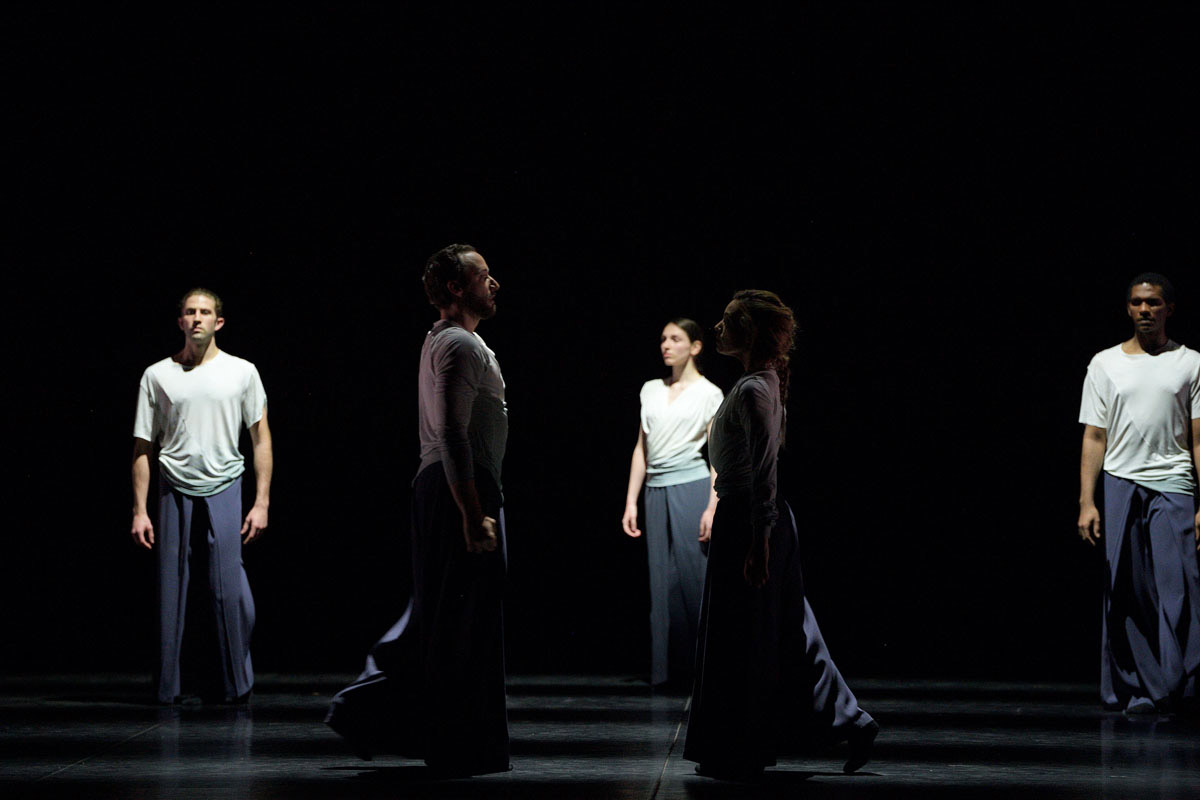
© Laurent Liotardo. (Click image for larger version)
English National Ballet
Reunion: Senseless Kindness, Laid in Earth, Take Five Blues, Echoes, Jolly Folly
★★★✰✰
London, Sadler’s Wells
17 May 2021
www.ballet.org.uk
sadlerswells.com
As Alistair Spalding, artistic director and CEO of Sadler’s Wells, said in welcoming audiences back into the theatre, ‘Applause is the best sound you can hear’. During lockdowns, it’s been disconcerting to watch dancers on digital screens taking their bows to no or canned applause. The first night audience for English National Ballet’s return to live performance clapped and cheered enthusiastically, making up in volume for the reduced number of seats available.
The five commissioned works in Reunion, intended for performance last November, were transformed by film-makers into digital fantasies for ENB’s pay-per-view season at the end of 2020 (still available online). Shorn of their filmic effects on stage, some survived better than others. Pleased though I was to be experiencing live dance in a theatre once again, I missed close-ups in the digital screenings that identified performers and emotions. Without the camera’s guidance, there was often no way of knowing who the people in short narrative works were meant to be, or whether indeed a narrative was implied.
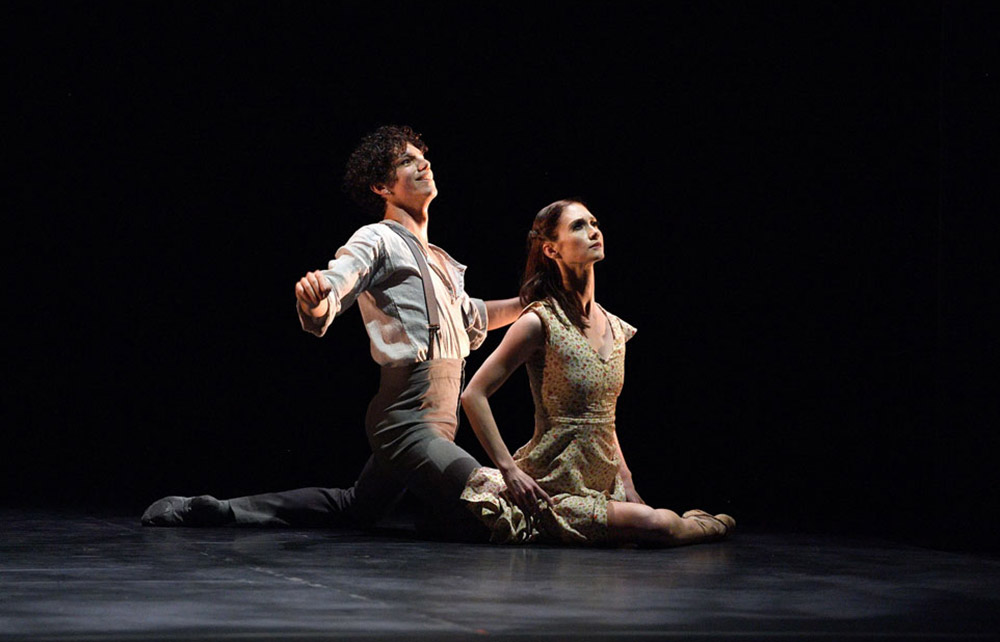
© Laurent Liotardo. (Click image for larger version)
In the first work, Senseless Kindness by Yuri Possokhov, I suspect the two couples could be versions of the same pair at different stages of their lives. Possokhov based his 15-minute ballet on Vasily Grossman’s Life and Fate, a War and Peace saga about Russian families caught up in World War II and Soviet Communism. Isaac Hernandez and Alison McWhinney are a couple at first very much in love, echoed by Francesco Gabriele Frola and Emma Hawes, in very similar outfits (Frola’s face hidden by a cap low over his eyes). Their moods fluctuate with the music, Shostakovich’s Piano Trio no 1, but without the full complement of projections by Thomas James in the digital version, there’s no indication of imprisonment behind bars or of early Soviet black and white films. Without a context, the choreography looks conventionally Bolshoi-style heroic or lyrical.

© Laurent Liotardo. (Click image for larger version)
Thomas James’s gothic film effects had turned Sidi Larbi Cherkaoui’s Laid in Earth into a mysterious double world of life and after-death, once again involving two couples. Since the music is the famous When I am laid in earth aria from Purcell’s Dido and Aeneas (with electronic additions), Precious Adams is presumably mourning her abandonment by Aeneas (James Streeter); Erina Takahashi could also be Dido or her sister, Belinda, and Jeffrey Cirio might be Hades, ruler of the underworld. In the digital version, earthly decay and prosthetic make-up demarcate the two realms. On a bare stage with a withered tree stump, Adams writhes and crumples in angry despair as the other three encounter her inexplicably.
Russell Maliphant’s Echoes is the least affected by the transition from screen to stage because its flickering light projections by video artist Panagiotis Tomaras remain the same. In the central duet, however, the faces of married couple Fernanda Oliveira and Fabian Reimar are in shadow, obscuring their poignant intimacy. Five dancers who join them half-way through in what seems a ritual are anonymous, insubstantial. The effect is mesmerising, but in a programme marking the return of dancers to live performance, Echoes seems a waste by using them as subjects for lighting effects.
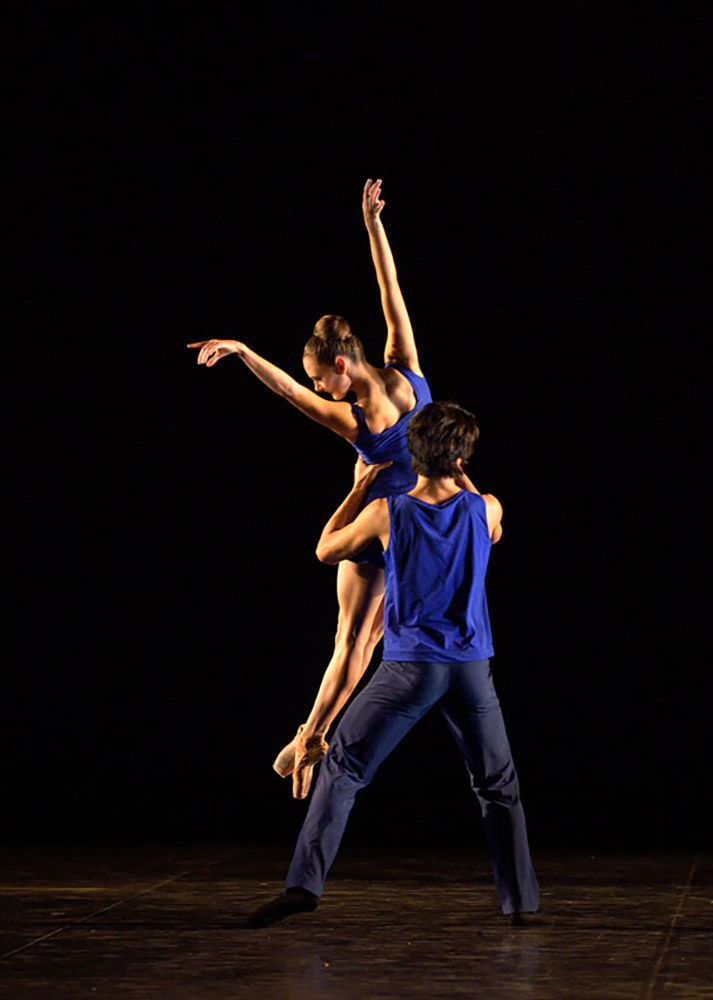
© Laurent Liotardo. (Click image for larger version)
A welcome relief from these melancholic offerings comes from Stina Quagebeur’s Take Five Blues and Arielle Smith’s Jolly Folly. Quagebeur enables her eight dancers to enjoy their balletic skills to the full, with standout moments for spinners and leapers. Although dressed alike in blue, each one emerges as an individual instead of an echo or shadow. Her choice of music, Nigel Kennedy’s take on Dave Brubeck’s Take Five jazz classic and JS Bach’s Vivace, raises everyone’s spirits.
Even more fun is Smith’s Jolly Folly, letting us enjoy familiar bits and piece by Strauss, Tchaikovsky and Mozart, filtered through the Klazz Brothers Latin American adaptations. Eight dancers are once again in identikit costumes, this time in oddly fitting black suits with bow ties, white shirts and braces. Only the difference in height reveals which ones are female versions of Charlie Chaplin’s Little Tramp persona. Amy Becker-Burnett’s film for ENB’s digital season transported them all to a black-and-white silent cinema world where anything could happen. On stage, they keep going flat out for 15 minutes in Smith’s crazy homage to Harald Lander’s Etudes: countless combinations, competitions, exits and entrances, quotes from ballets as well as films and variety shows. The dancers’ pent-up energy explodes with impressive stamina after so long without regular live performances.

© Laurent Liotardo. (Click image for larger version)
Welcome back, English National Ballet and Sadler’s Wells. Though Reunion isn’t an ideal introductory programme of new works (ENB’s Southbank Centre season, 16-26 June, with popular extracts from the repertoire, should prove more of a celebration) it shows the company in good form. Jolly Folly, the well named finale, certainly sent first night audience members home in the rain in very good cheer.












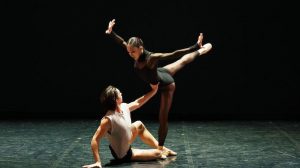
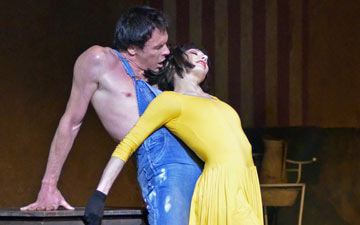


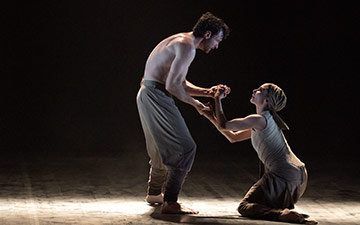
You must be logged in to post a comment.